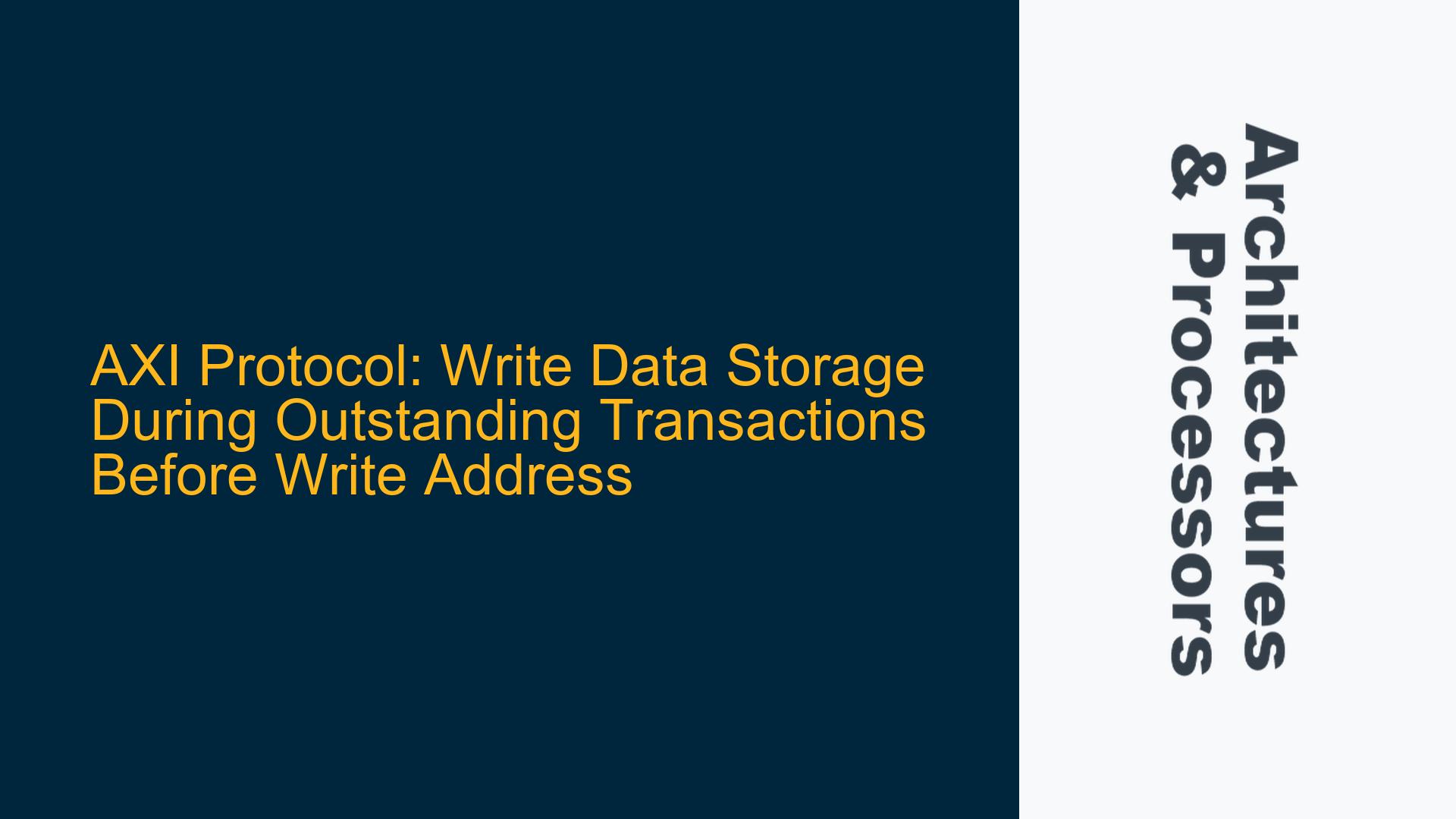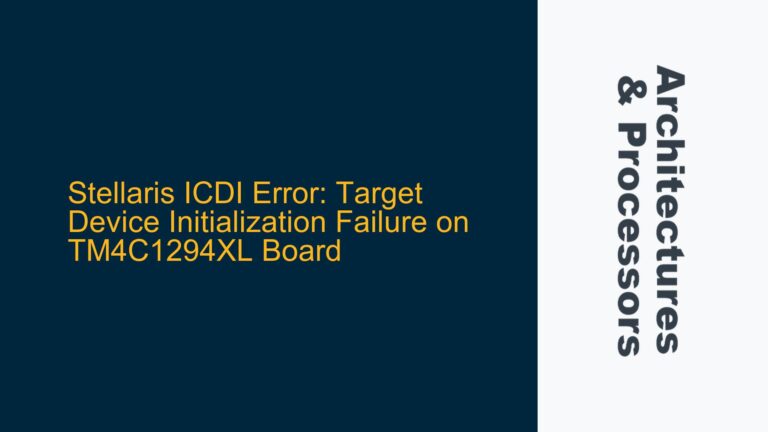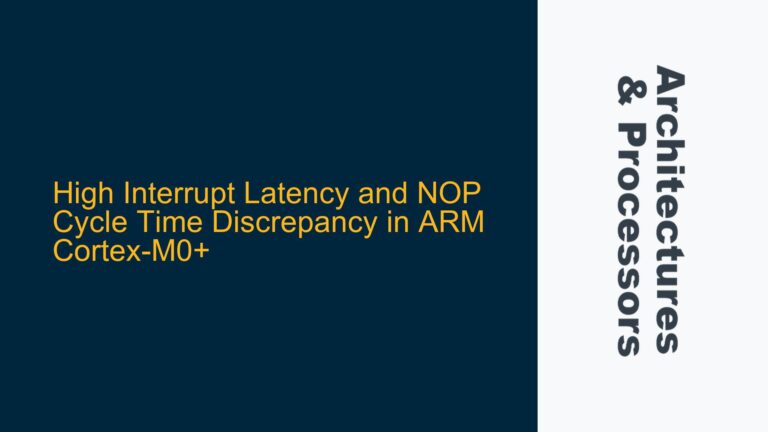Write Data Storage Mechanisms in AXI Protocol During Outstanding Transactions
The Advanced eXtensible Interface (AXI) protocol, widely used in ARM-based systems, is designed to handle high-performance data transfers between masters and slaves. One of the key features of AXI is its ability to support outstanding transactions, where data can be sent before the corresponding address. This capability introduces a critical question: where is the write data stored during an outstanding transaction before the master sends the write address? The answer lies in the intricate design of the AXI protocol and the specific implementation of the interconnect and target devices.
In AXI, the write data channel (W channel) and the write address channel (AW channel) are decoupled, allowing the master to send write data before or after the write address. This decoupling is essential for optimizing performance, as it enables pipelining and parallelism in data transfers. However, it also introduces complexity in managing the storage and routing of write data when the address is not yet available. The storage of write data during such outstanding transactions is not handled by standard memory but by specialized buffering or registering mechanisms within the AXI interconnect or the target device.
The AXI interconnect plays a pivotal role in managing these transactions. When the master sends write data before the write address, the interconnect must temporarily store this data until the address is received. This storage can be implemented using input-stage buffering or registering within the interconnect. The interconnect logic uses these buffers to hold the write data until it can determine the correct routing path based on the incoming write address. If the interconnect lacks sufficient buffering capacity, it may stall the write data transfers by deasserting the WREADY signal, effectively pausing the data transfer until the address is available.
Similarly, the target device (AXI subordinate) may also incorporate buffering or registering mechanisms to handle early write data. If the target receives write data before the corresponding address, it can either store the data temporarily in a write buffer or stall the data transfer by deasserting WREADY. The choice between these approaches depends on the specific implementation of the target device and the desired balance between performance and complexity.
Buffering, Registering, and Stalling Mechanisms in AXI Interconnects and Targets
The storage of write data during outstanding transactions in AXI is governed by several mechanisms, including buffering, registering, and stalling. Each of these mechanisms has distinct characteristics and implications for system performance and design complexity.
Buffering is a common approach used in AXI interconnects to temporarily store write data before the corresponding address is received. Buffers are typically implemented as FIFO (First-In-First-Out) queues, which allow the interconnect to hold multiple write data packets until the address is available. The size of these buffers is a critical design parameter, as it directly impacts the system’s ability to handle outstanding transactions. Larger buffers can accommodate more outstanding transactions, improving performance by reducing the likelihood of stalling. However, larger buffers also increase the area and power consumption of the interconnect, making it essential to strike a balance between performance and resource usage.
Registering is another mechanism used to handle early write data in AXI systems. Unlike buffering, which stores multiple data packets, registering involves storing a single data packet in a register until the address is received. This approach is simpler and more area-efficient than buffering but is limited in its ability to handle multiple outstanding transactions. Registering is often used in systems where the number of outstanding transactions is low, or where the interconnect logic can quickly resolve the address and route the data.
Stalling is a fallback mechanism used when buffering or registering is insufficient to handle early write data. When the interconnect or target device cannot store the incoming write data, it deasserts the WREADY signal, effectively pausing the data transfer until the address is available. Stalling ensures data integrity by preventing data loss but can negatively impact system performance, as it introduces latency in the data transfer process. The frequency and duration of stalling depend on the design of the interconnect and target devices, as well as the workload characteristics.
The choice between buffering, registering, and stalling depends on several factors, including the expected number of outstanding transactions, the desired performance, and the available resources. In high-performance systems, designers often opt for a combination of these mechanisms to achieve the best balance between performance and complexity. For example, an interconnect might use buffering to handle most outstanding transactions while resorting to stalling only in rare cases where the buffer capacity is exceeded.
Optimizing AXI Write Data Handling: Strategies for Efficient Data Storage and Transfer
Optimizing the handling of write data during outstanding transactions in AXI requires a deep understanding of the protocol and the specific implementation of the interconnect and target devices. Several strategies can be employed to ensure efficient data storage and transfer, minimizing latency and maximizing throughput.
One key strategy is to carefully design the buffering capacity of the AXI interconnect. The buffer size should be chosen based on the expected number of outstanding transactions and the desired performance. In systems with a high degree of parallelism and frequent outstanding transactions, larger buffers are necessary to avoid stalling. However, in systems with fewer outstanding transactions, smaller buffers may suffice, reducing area and power consumption. Designers can use simulation and profiling tools to analyze the workload and determine the optimal buffer size.
Another strategy is to implement adaptive stalling mechanisms that dynamically adjust the WREADY signal based on the current state of the interconnect and target devices. For example, the interconnect could monitor the fill level of its buffers and deassert WREADY only when the buffer is nearly full. This approach reduces the frequency of stalling, improving overall system performance. Similarly, the target device could use adaptive stalling to manage its internal buffers, ensuring that it can handle incoming write data without unnecessary delays.
Registering can also be optimized by carefully designing the interconnect logic to minimize the time between receiving write data and resolving the corresponding address. This can be achieved by optimizing the address decoding logic and reducing the number of pipeline stages in the interconnect. Faster address resolution reduces the need for buffering and registering, improving system performance and reducing resource usage.
In addition to these strategies, designers can leverage advanced features of the AXI protocol, such as out-of-order transaction completion and multiple outstanding transactions, to further optimize data handling. Out-of-order completion allows the interconnect and target devices to process transactions in the most efficient order, reducing latency and improving throughput. Multiple outstanding transactions enable the master to issue several transactions simultaneously, increasing parallelism and overall system performance.
Finally, thorough testing and validation are essential to ensure that the AXI system handles write data correctly during outstanding transactions. Designers should use a combination of simulation, formal verification, and hardware testing to verify the correctness and performance of the interconnect and target devices. This includes testing edge cases, such as maximum buffer capacity and high transaction rates, to ensure that the system operates reliably under all conditions.
In conclusion, the handling of write data during outstanding transactions in AXI is a complex but critical aspect of system design. By understanding the mechanisms of buffering, registering, and stalling, and employing optimization strategies, designers can ensure efficient and reliable data transfer, maximizing the performance of ARM-based systems.






